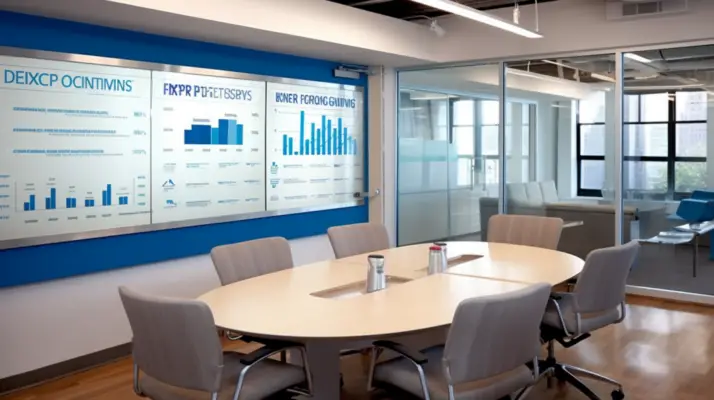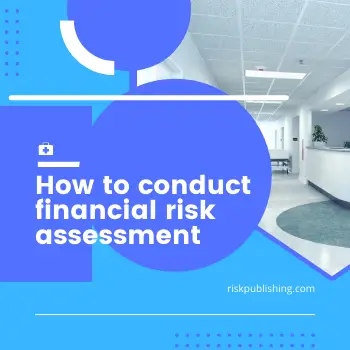Financial risk management is a critical component for banks and financial institutions in today’s ever-changing and expanding risk landscape. To effectively manage risk, organizations must establish robust risk frameworks that encompass various areas such as market, credit, interest rate, and liquidity risks.
Key Risk Indicators (KRIs) play a pivotal role in this process by providing a structured framework for monitoring risk levels across the organization. Derived from data collected from internal databases, external sources, and historical trends, KRIs serve as metrics to measure the level of risk within an organization. They accurately reflect current risk levels and include both short-term and long-term goals.
Here are some examples of KRIs that might be used in financial risk management:
Credit Risk Indicators: These could include the number of late payments, the number of customers exceeding their credit limit, or the amount of bad debt written off.
Market Risk Indicators: These might include changes in interest rates, foreign exchange rates, or commodity prices that could impact the value of investments.
Liquidity Risk Indicators: These could include the current ratio (current assets divided by current liabilities), the quick ratio (quick assets divided by current liabilities), or the cash conversion cycle.
Operational Risk Indicators: These might include the number of failed trades, the number of system downtime incidents, or the number of regulatory breaches.
Solvency Risk Indicators: These could include the debt-to-equity ratio, the interest coverage ratio, or the cash flow-to-debt ratio.
Profitability Indicators: These might include net profit margin, return on assets, or return on equity.
Growth Indicators: These could include revenue growth rate, net profit growth rate, or earnings per share growth rate.
Stakeholders must comprehend how KRIs are calculated and their significance to take appropriate action based on KRI results. Utilizing KRIs enables organizations to promptly identify potential risks, thus strengthening their overall risk management efforts and fortifying themselves against competitors in the industry.

What are KRIs?
Key Risk Indicators (KRIs) serve as essential metrics within the financial risk management landscape, providing a structured framework that enables organizations to identify, monitor, and manage risks effectively by utilizing data collected from various sources such as internal databases, external references, and past trends to determine the current level of risk.
KRIs offer a comprehensive view of an organization’s risk profile by quantifying key aspects of its operations. These metrics include operational losses, customer satisfaction levels, employee turnover rates, and environmental, social, and governance (ESG) indicators. Measuring these factors against specific criteria, organizations can gather reliable information that accurately reflects their risk exposure.
An effective KRI framework should incorporate measures for both short-term and long-term goals. This ensures that risks are identified in real-time and considered within a broader context. Additionally, stakeholders must understand how KRIs are calculated and why they are important to make informed decisions based on the results.
Employing KRIs, organizations can quickly identify potential risks and take appropriate action to mitigate them. Reliable sources of data collection are crucial when designing a KRI framework to ensure accurate and timely information. Furthermore, obtaining buy-in from all stakeholders is vital for the successful implementation and utilization of KRIs.
Key Risk Indicators play a critical role in financial risk management by providing data-driven metrics for identifying organisational risks. By utilizing reliable data sources and involving all stakeholders, organizations can better understand their risk profiles and make informed decisions to safeguard against potential threats in today’s competitive environment.
Importance of KRIs
Effective monitoring and measurement tools can provide valuable insight into the current risk levels within an organization, allowing stakeholders to make informed decisions based on reliable data.
Key Risk Indicators (KRIs) serve as these tools by offering a structured framework for monitoring organisational risk levels. KRIs are metrics used to measure the level of risk and are derived from data collected from internal databases, external sources, and historical trends.
The importance of KRIs lies in their ability to reflect the current level of risk within an organization accurately. Organizations can gather reliable information essential for effective risk management by using specific criteria in the data collection process. KRIs should include measures for both long-term and short-term goals to ensure comprehensive coverage of potential risks.
Stakeholders are crucial in understanding how KRIs are calculated and why they are important. Their buy-in is necessary when taking action based on KRI results. Reliable sources of data collection also contribute to the effectiveness of a KRI framework.
Overall, KRIs provide data-driven metrics for identifying potential risks quickly and effectively. In a competitive environment where businesses must stay safe from potential risks, robust KRI frameworks are vital for successful risk management strategies.
Designing a KRI framework
Designing a robust KRI framework is crucial for organizations aiming to enhance their risk management strategies and ensure the safety of their operations in a competitive business environment. A well-designed KRI framework provides data-driven metrics that help identify potential risks quickly and effectively.
To create a practical KRI framework, organizations should consider the following:
- Identify relevant risk areas: Organizations must identify the key areas specific to their industry and operations. This involves understanding the nature of the business, its objectives, and potential risks associated with each area.
- Define measurable metrics: Once the risk areas are identified, organizations should define measurable metrics that accurately reflect the level of risk within each area. These metrics should be based on reliable sources of data collection such as internal databases, external sources, and historical trends.
- Set clear thresholds: It is important to set clear thresholds for each metric to determine when action needs to be taken. These thresholds can be based on long-term and short-term goals and should align with the organization’s risk appetite.
Following these steps, organizations can design a comprehensive KRI framework that provides accurate insights into their risk levels across various areas of operation. This enables them to proactively manage risks, make informed decisions, and safeguard their business from potential threats in today’s competitive landscape.
Taking action based on KRIs
Taking proactive measures based on the analysis of KRIs allows organizations to mitigate potential risks and make informed decisions to protect their operations in today’s competitive business landscape. One key risk indicator (KRIs) has been identified and monitored, stakeholders need to take appropriate action based on the results. This involves understanding the significance of the KRI data and its implications for the organization.
When taking action based on KRIs, stakeholders must clearly understand how these indicators are calculated and why they are important. By having this knowledge, they can effectively interpret the data and determine appropriate actions to address any potential risks that may be identified.
Furthermore, all stakeholders should be involved in the decision-making process regarding taking action based on KRI results. This ensures that there is buy-in from all parties involved and increases the likelihood of successful risk mitigation strategies being implemented.
In addition, reliable sources of data collection are essential when designing a KRI framework. Organizations need accurate and up-to-date information to make well-informed decisions. Therefore, it is important to establish robust data collection processes that gather reliable information from internal databases, external sources, and historical trends.
Taking action based on KRIs enables organizations to proactively manage risks by identifying potential issues quickly and effectively.

Benefits of using KRIs
Utilizing data-driven metrics, organizations can gain valuable insights into potential risks and opportunities within their operations by implementing Key Risk Indicators (KRIs) as part of their risk management framework. KRIs provide a structured framework for monitoring organisational risk levels, allowing stakeholders to identify, monitor, and manage risks effectively and quickly.
Collecting data from internal databases, external sources, and historical trends, organizations can accurately determine the current risk level.
The benefits of using KRIs in financial risk management are numerous:
- Early identification of risks: KRIs allow organizations to identify potential risks before they escalate into significant issues proactively. By monitoring specific indicators such as operational losses or customer satisfaction levels, organizations can take timely action to mitigate these risks.
- Improved decision-making: Data-driven metrics provided by KRIs enable informed decision-making processes based on reliable information. Organizations can use these insights to make strategic decisions that align with their risk appetite and objectives.
- Enhanced communication and transparency: KRIs provide a common language for discussing risks among stakeholders.
Incorporating KRIs into a risk management framework equips organizations with valuable insights that help them navigate potential risks effectively. It allows for early identification of risks, improves decision-making processes, and fosters transparent communication among stakeholders.
Frequently Asked Questions
How can financial institutions determine which metrics should be used as key risk indicators (KRIs)?
Financial institutions can determine specific metrics for key risk indicators (KRIs) by conducting a comprehensive risk assessment. This involves identifying potential risks, analyzing historical data and trends, considering regulatory requirements, and consulting industry best practices to select relevant and reliable metrics.
What are some challenges that organizations may face when designing a KRI framework?
When designing a KRI framework, organizations may face challenges such as determining reliable sources of data collection, ensuring that the criteria used in data collection are specific and reliable, and obtaining buy-in from all stakeholders for taking action based on KRI results.
How can stakeholders effectively interpret and understand the results of KRIs?
Stakeholders can effectively interpret and understand the results of KRIs by ensuring clear communication and explanation of the metrics, providing context and benchmarks for comparison, facilitating discussions to gain insights, and aligning actions with identified risks.
What are some potential pitfalls or risks of relying solely on KRIs to make decisions and take action?
Relying solely on KRIs to make decisions and take action can have potential pitfalls. It may lead to a narrow focus on quantitative metrics, overlooking qualitative factors and subjective judgment. Additionally, KRIs may not capture all relevant risks or account for emerging risks. Decision-making should consider a holistic approach incorporating other sources of information and expert judgment.
How can organizations ensure the reliability and accuracy of the data collected for KRIs?
Organizations can ensure the reliability and accuracy of data collected for KRIs by implementing robust data collection processes, using reliable sources, conducting regular data quality checks, and establishing clear criteria for data collection. This helps to minimize errors and biases in the data.

Conclusion
Key Risk Indicators (KRIs) are essential for effective financial risk management in banks and institutions. They provide a structured framework for monitoring risk levels across an organization and help accurately measure the risk level.
KRIs play a crucial role in identifying potential risks quickly and taking appropriate action based on the results. By utilizing reliable data sources and gaining buy-in from stakeholders, organizations can enhance their risk management efforts and safeguard themselves in a competitive environment.
The benefits of using KRIs include improved risk identification, enhanced decision-making, and increased organizational resilience.

Chris Ekai is a Risk Management expert with over 10 years of experience in the field. He has a Master’s(MSc) degree in Risk Management from University of Portsmouth and is a CPA and Finance professional. He currently works as a Content Manager at Risk Publishing, writing about Enterprise Risk Management, Business Continuity Management and Project Management.

